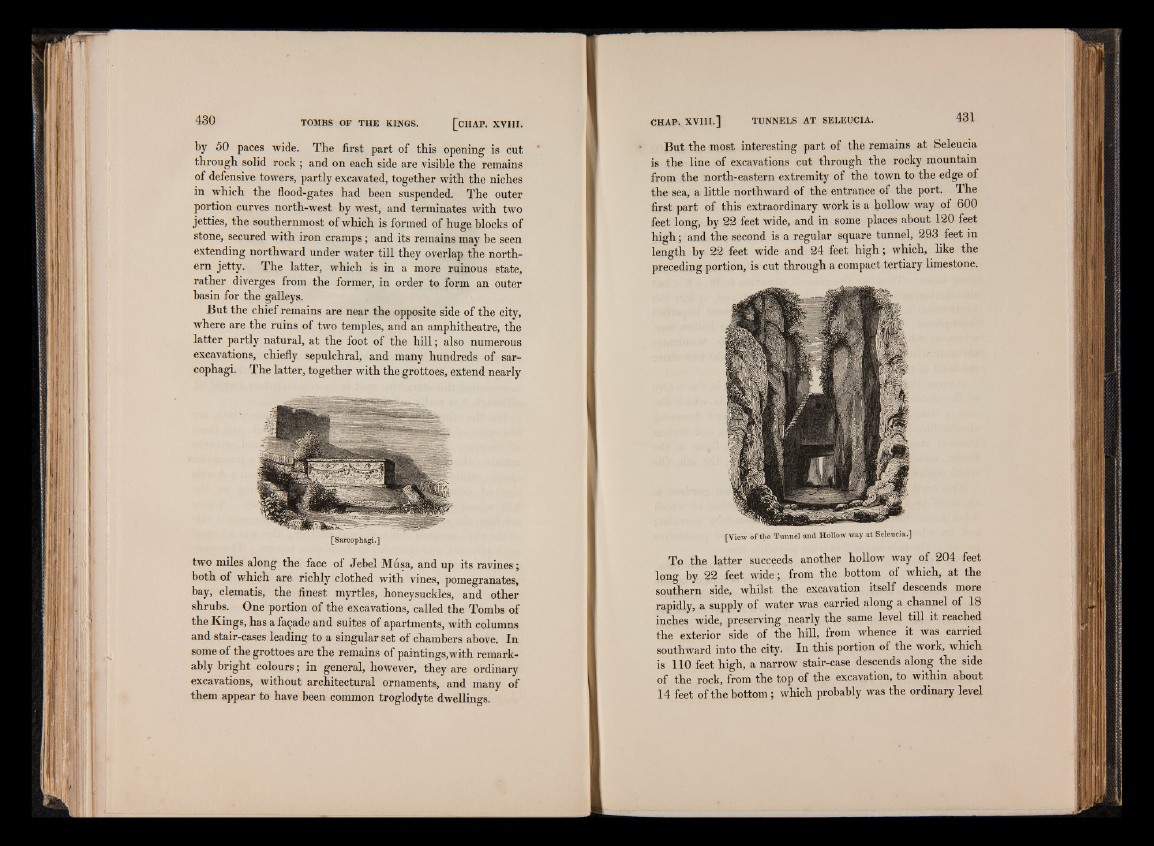
by 50 paces wide. The first part of this opening is cut
through solid rock ; and on each side are visible the remains
of defensive towers, partly excavated, together with the niches
in which the flood-gates had been suspended. The outer
portion curves north-west by west, and terminates with two
jetties, the southernmost of which is formed of huge blocks of
stone, secured with iron cramps; and its remains may be seen
extending northward under water till they overlap the northern
jetty. The latter, which is in a more ruinous state,
rather diverges from the former, in order to form an outer
basin for the galleys.
But the chief remains are near the opposite side of the city,
where are the ruins of two temples, and an amphitheatre, the
latter partly natural, at the foot of the h ill; also numerous
excavations, chiefly sepulchral, and many hundreds of sarcophagi.
The latter, together with the grottoes, extend nearly
[Sarcophagi.]
two miles along the face of Jehel Musa, and up its ravines;
both of which are richly clothed with vines, pomegranates,
bay, clematis, the finest myrtles, honeysuckles, and other
shrubs. One portion of the excavations, called the Tombs of
the Kings, has a façade and suites of apartments, with columns
and stair-cases leading to a singular set of chambers above. In
some of the grottoes are the remains of paintings,with remarkably
bright colours ; in general, however, they are ordinary
excavations, without architectural ornaments, and many of
them appear to have been common troglodyte dwellings.
But the most interesting part of the remains at Seleucia
is the line of excavations cut through the rocky mountain
from the north-eastern extremity of the town to the edge of
the sea, a little northward of the entrance of the port. The
first part of this extraordinary work is a hollow way of 600
feet long, by 22 feet wide, and in some places about 120 feet
high; and the second is a regular square tunnel, 293 feet in
length by 22 feet wide and 24 feet high; which, like the
preceding portion, is cut through a compact tertiary limestone.
[View of the Tunnel and Hollow way at Seleucia.]
To the latter succeeds another hollow way of 204 feet
long by 22 feet wide; from the bottom of which, at the
southern side, whilst the excavation itself descends more
rapidly, a supply of water was carried along a channel of 18
inches wide, preserving nearly the same level till it reached
the exterior side of the hill, from whence it was carried
southward into the city. In this portion of the work, which
is 110 feet high, a narrow stair-case descends along the side
of the rock, from the top of the excavation, to within about
14 feet of the bottom ; which probably was the ordinary level